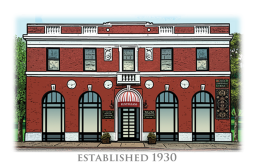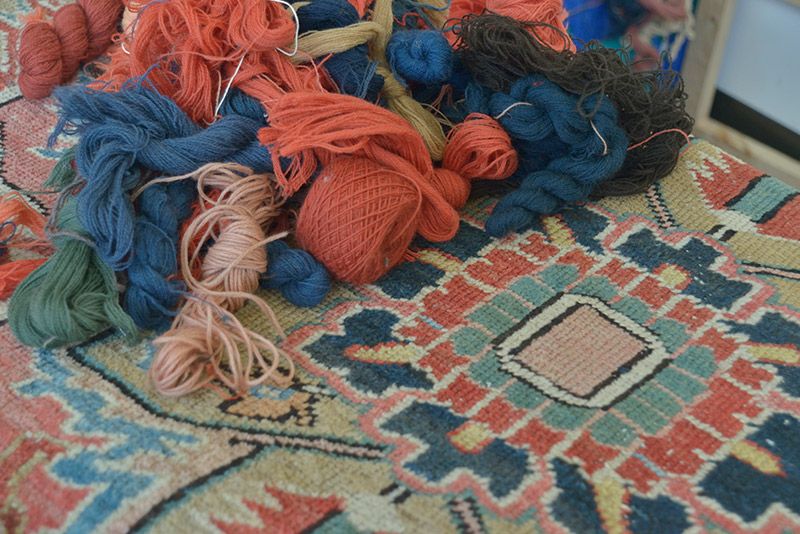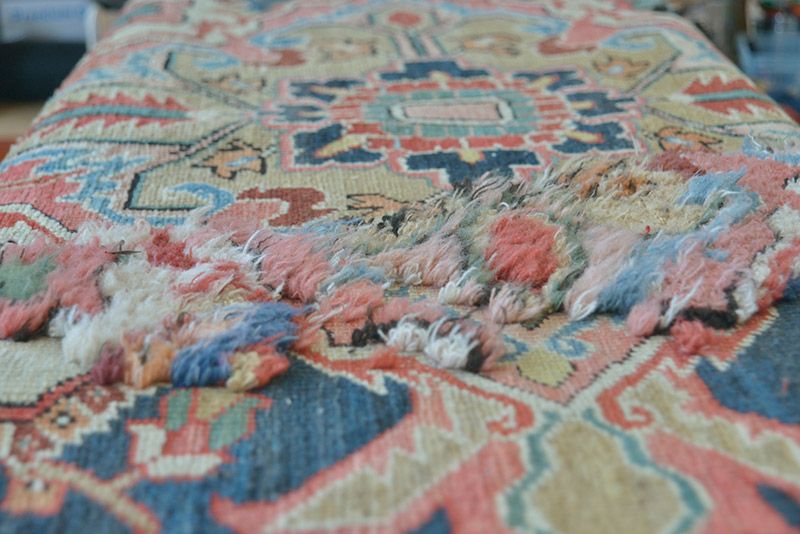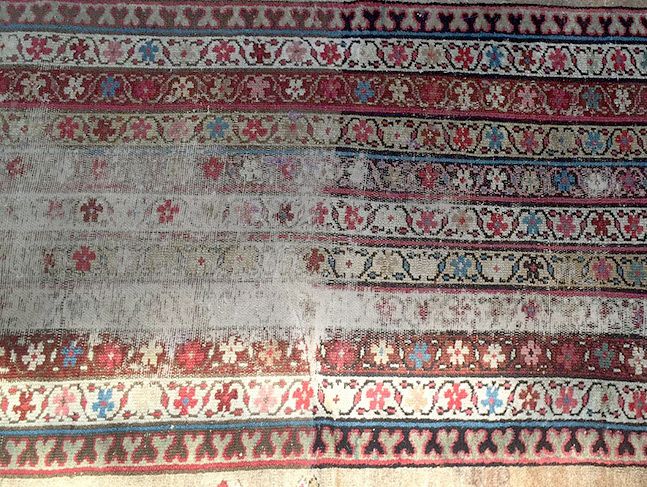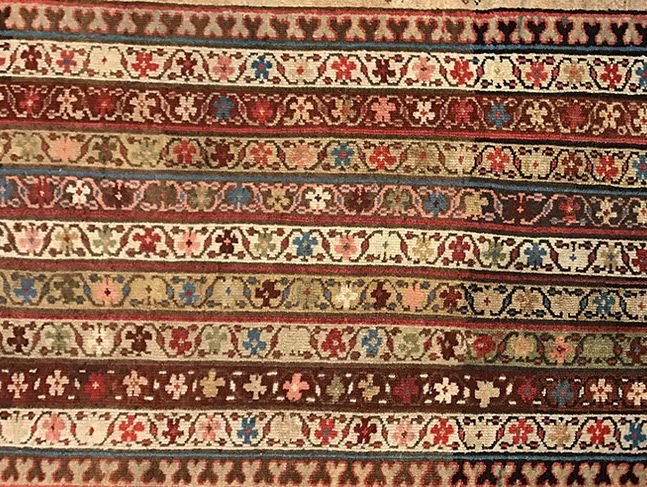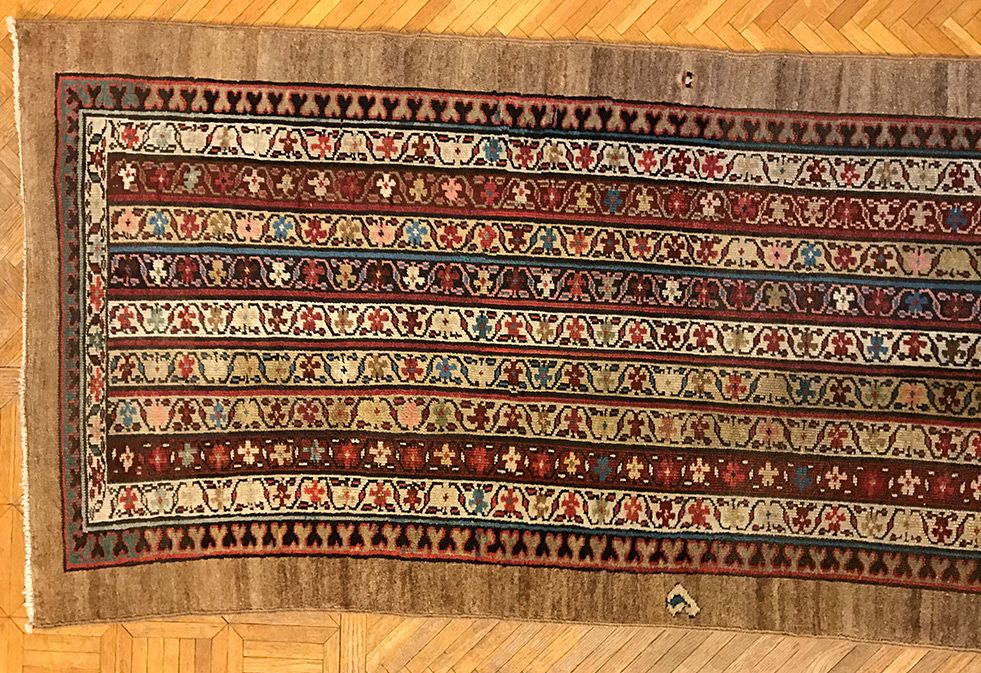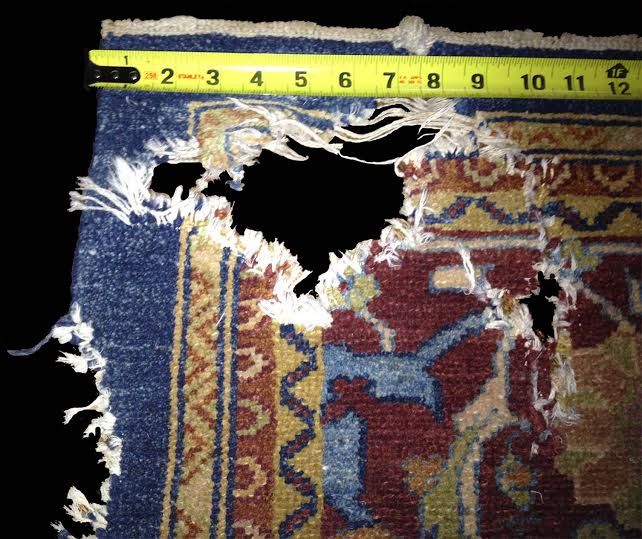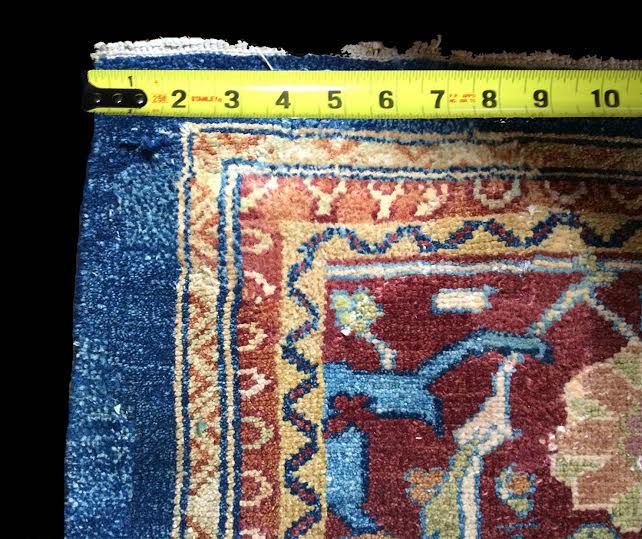1 Governor St, Providence RI 02906
Basic Repairs
Basic Repairs
Has Your Rug Been Abused?
Over time, damage and wear will happen to all rugs and carpets. Fine floor coverings are susceptible to traffic patterns, spills and pets. The good news is that most significant damage can be halted or reversed. Rug owners should base their decision on whether to repair or restore a rug on the relationship between the cost of the needed repairs and the rug’s value.
Rustigian Expert Hand Repair Restoration Services Includes:
- Reconstruction of ends, edges, weak or dry areas
- Reweaving of pile destroyed by moth damage, water or simple foot traffic
- Reinforcement of worn edges, patches or old repairsFlat weaving to reinforce and replace worn pile.
- Replacement of fringe
- Color enhancements for very old, worn or faded carpets.
Repair Q&A for the curious below
Rugs in high traffic lanes, under rocking chairs and subject to gritty sneakers and crepe soled shoes will show wear. Rotate area rugs to lengthen their useful life. Moths hide in the darkened areas under skirted furniture. Their penchant for wool, left unchecked, can result in holes chewed right down to or through a rug’s foundations. So eliminate the wearing of soft soled footwear and vacuum, vacuum, vacuum …but not the fringe.
Repeated movement or adjustments of heavy furniture can distend a rug’s foundation ultimately causing rips and tears at stress points – e.g. the feet of the furniture.
A carpet will absorb water from a flower pot positioned directly upon it. Continuous exposure to moisture causes dry rot wherein cotton and wool fibers become brittle and break. The affected area literally disintegrates. A saucer is not enough to prevent moisture damage. Plants should really not rest on a rug; rather they should be on a “trivet” or planter with air space between plant and rug.
And the threat of water damage looms large in other situations. Beware of storing a rug in a damp basement or near a water heater. Keep an eye out for on leaky radiators. The good news is that all of these maladies are remedied by reweaving but some projects are major undertakings that can be quite costly.
A proficient weaver begins to recreate the foundation by carefully splicing new warp and weft threads into the surrounding fabric. After judicious and careful selection of yarns (to match colors precisely), he reweaves the pile using the exact type of knot (symmetrical/Turkish or asymmetrical/Persian) used by the original weaver. He creates the “replacement” pile by “reading” and duplicating the pattern in another repeat from the rug. This is typically an expensive repair given the relative scarcity of skilled professionals.
Yes and no..... It is not always possible to completely eliminate staining from mold growth. As to the odor, sun and a light bleach wash are usually very successful remedies for mildew. Happily, chlorine does not affect the color of wool as it does cotton. A soap and bleach wash by a professional is the quickest and most effective treatment for the odor cause by prolonged exposure to dampness and water. Recently there have been new products introduced on the market which also aid in the odor elimination process and we use these and good old fashioned bleach routinely in our cleaning operation.
Restoration involves the use of materials, colors and weaving techniques that are extraordinarily close to those of the original piece – particularly for older rugs. Repairs can be a much less “authentic” undertaking making the rug useable if not exactly original. For most new rugs, only repairs are necessary. Investment quality rugs warrant the consideration of restoration. At a minimum, a reputable dealer should not recommend or perform any repairs such as patching with glue that would compromise the value of such a carpet and/or prohibit the possibility of restoration at a future date.
Watch for knots falling from the fringe ends and for bare areas on the long edges. Inspect your carpets on the front and back for moth damage (little pits in the pile) and larvae (white fuzzy and/or sandy residue). Keep an eye out for uneven wear caused by traffic and seating patterns.
Get an estimate of both the cost of repairs and the value of the rug. A dealer with on-location repair services will be able to demonstrate the techniques proposed and show you examples of his or her work. In theory, if the value of the rug exceeds the cost of the repairs by a considerable amount, go ahead with the project. If the two values are similar or the repair costs exceed the worth of the carpet, a decision should be based on the rug’s usefulness and/or its sentimental value.
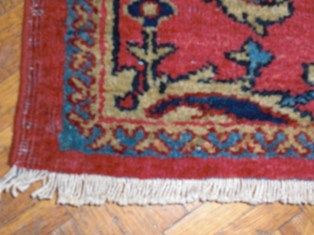
The most typical repairs are made to the ends and edges, where techniques like simple yarn wrapping and button-hole stitching are performed. These procedure range in price from $12-30 per linear foot, and their cost depends on the difficulty of the hand sewing required for the particular rug....loosely translated....the price depends upon how hard is it to get a needle accurately through the textile with a hidden stitch.
Get the latest news, newest arrivals, and promotions!
Rustigian Rugs
One Governor Street, Providence, RI 02906
(Off-street parking in the rear of the building).
Call: 401-751-5100.
Hours:
Tuesday-Friday: 10am-5:30pm
Saturday : 10am-5:00pm
Closed Sunday & Monday
Copyright 2023 by V. George Rustigian Rugs
